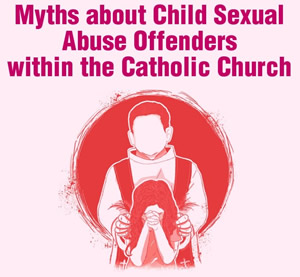Some blindly believe that child sexual abuse is a particular problem among priests. The data show that child sexual abuse prevalence is lower among priests than school teachers in the same time frame, and definitely lower than in the general population (Plante, 2010. para. 2). Biased supporters of the Church falsely believed that the child sexual abuse crisis in the Church was the result of exagger ation by Godless media and attor neys’ and lawyers’ greed for work. Others believed it was an American problem (Bemi, 2012, p. 186). It was not the numerical significance but the questions raised about the credibility of the office of priesthood that popularized child sexual abuse events involving clerics and drew public attention (Zollner & Cucci, 2013, pp. 38-39). Any exaggerated accusation or biased negation re garding the presence of child sexual abuse among clerics will obstruct the child protection mission within the Church. A sincere confession about its reality, though the per- centage is only small, is the right place to start.
Another popular false belief is that all clerical child sexual abusers are paedophiles. The Vatican states that of about 3000 child sexual abuse. cases reported in CDF (Congrega- tion for the Doctrine of the Faith) during the period 2000-2010, only 10% were acts of paedophilia in the strict sense (Zollner & Cucci, 2013, p. 36). A John Jay study shows that less than 3.8% of priests facing child sexual abuse allegations exhibited paedophilia. The majority of priests who were given residential treatment follow- ing an allegation of sexual abuse of a minor had also reported sexual behaviour with adult partners (John Jay College Research Team, 2011. pp. 3, 10 & 55).
Some wrongly blame the man datory vow of celibacy for the child sexual abuse crisis and believe that its removal will solve the issues (Plante, 2010, para. 3). They un derstand celibacy as a situational or social lock, and reason that when sex is externally denied, celibates tend to explore it internally, suspending normal psychosexual development and leading to sexually abusive be- haviour (The John Jay College of Criminal Justice, 2004, p. 169). If this theory were true, marriage would have cured such priest perpetrators; but it is wrong. Many child molesters continued abuse after marriage and some even on their own children. In the US, paedophilia has been found two to ten times more frequently among married protestant pastors than among Catholic priests (Zollner & Cuc ci, 2013, pp. 59-60). An active and satisfying sex life does not guarantee that sexually abusive behaviour will not occur. There is no evidence of a causal link between sexual outlet and sexual abuse (Parkinson, 2013, p. 13). Historically speaking, though Roman Catholic priests have been practising the vow of cel- ibacy since the 11th century, the steady rise in child sexual abuse among clerics only occurred be- tween 1950 and 1980 (John Jay College Research Team, 2011, pp. 34-35). There may be other reasons for this phenomenon, but blaming celibacy for CSA does not make sense. Moreover it is not logical to argue that removal of the vow of celibacy will prevent child sexual abuse among clergy. Some incidents of failure in celibacy are not a sufficient reason to remove it (Jolm Jay College Research Team, 2011, pp. 34-35).


